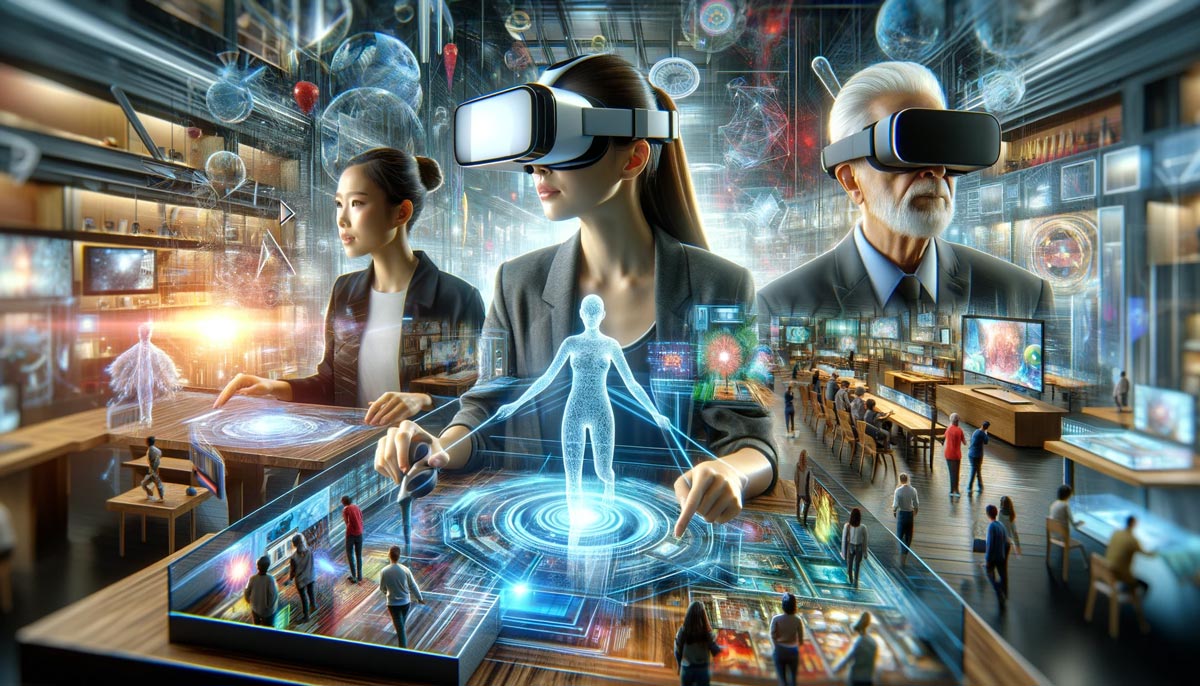I love trying new Virtual Reality (VR) games.
But I am even more blown away at how much marketing benefits from the foundation established by the gaming industry.
Although Virtual Reality has been a marketing buzzword for the past decade, the technology is now rather incredible and is gradually becoming an essential tool for brands that want to offer their customers an unforgettable experience.
Thinking about taking your brand into the metaverse? Read on. In three minutes you’ll be able to decide if you should use VR in your marketing strategy.
What is virtual reality?
VR technology transports users into a three-dimensional world where they can interact and engage with different objects as if they were in real life.
VR requires a headset and software to create an immersive experience that tricks the brain into believing it is actually experiencing this “other” world.
Past technology was weak and inadequate, but with the latest VR headsets such as the wireless Meta Quest, the once impossible is now very possible.
For companies, VR technology provides an opportunity to create engaging brand experiences that connect with consumers on a deeper level.
How can VR improve brand engagement?
One of the key benefits of VR for brands is increased engagement.
VR technology creates an immersive experience that occupies users and encourages them to spend more time engaging with a brand, product, or service.
VR will provide a higher level of interaction with the brand, as users can explore the environment at their own pace personalize their experience.
Brands can create a variety of experiences, such as virtual product demos, brand storytelling, and entertaining games that consumers can engage with.
The immersive nature of VR ensures that consumers are more deeply connected, creating a memorable experience that results in repeat interaction.
How can VR improve shopping experiences?
Virtual Reality improves shopping experiences by providing consumers with a futuristic interface that allows full immersion into your digital marketplace.
VR can help consumers feel more confident in their purchasing decisions by allowing them to visualize and test various products and services in real-time scenarios. Think virtual try-ons, only a lot more fun and engaging.
Consumers can easily navigate digital storefronts and feel comfortable in their journey, which enables a personalized and tailored shopping experience.
Brands can also create virtual stores that can be conveniently accessed from anywhere, making it easier for consumers to shop anywhere, at any time.
Advantages and disadvantages of VR marketing
VR is an incredible technology but because it is relatively new there are also disadvantages of integrating it into your marketing strategy.
One of the essential benefits is that it provides an improved brand experience, better customer engagement, and increased sales revenues.
However, VR product demos and other experiences are quite expensive to create. Development costs can be a considerable barrier to entry.
Additionally, implementing VR in a campaign can be challenging and you will need to invest resources for creating high-quality content.
The most notable disadvantage of VR is the potential for motion sickness.
Some consumers may not feel comfortable using your demo and may experience motion sickness. Nothing can be worse for a product demo than your customer feeling sick and puking in the event hall after trying a demo of your new exciting product.
How to use VR in your marketing strategy?
Implementing VR in your marketing strategy can be challenging, but the benefits can be significant if done correctly.
The first step is to clearly define the goals and objectives of the campaign. Assess what you want to achieve and how you plan to measure success.
It is also important to understand your customers, what interests them, and what types of experiences they value.
You can also outsource to an experienced VR developer or invest in training your in-house team to develop compelling VR experiences.
Conclusion:
Virtual reality technology is becoming a powerful tool for brands to offer engaging and immersive experiences for their customers.
By incorporating VR technology into your marketing strategy, you can provide your consumers with an interactive, personalized shopping experience, driving brand engagement and improving sales revenues.
As VR is still an emerging technology, challenges with development costs and access may be a roadblock for some small businesses; however, in my personal experience the benefits and advantages of using VR far outweigh the risks.
By considering the advantages and disadvantages of implementing virtual reality and learning how to use this technology effectively, you can create exciting campaigns that attract and engage your audience in new and innovative ways.
Related Links:
➡️ Five Innovative Ways Virtual Reality Improves Customer Experience
➡️ The Impact Of AR And VR On Customer Experience
➡️ How to improve customer experience with Virtual Reality (VR)

